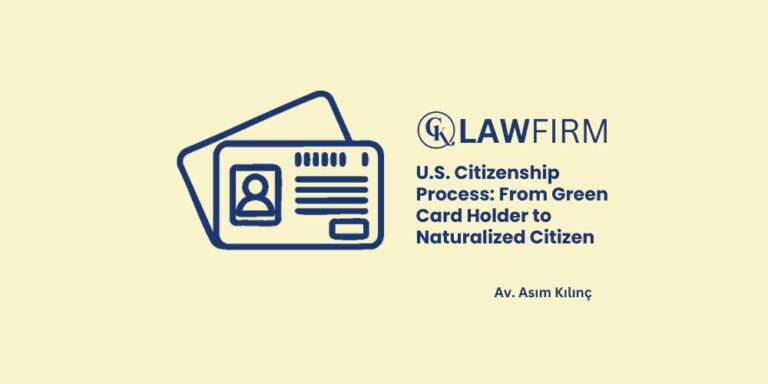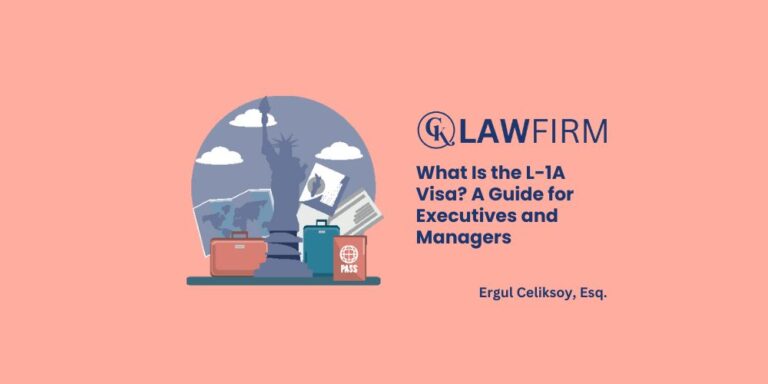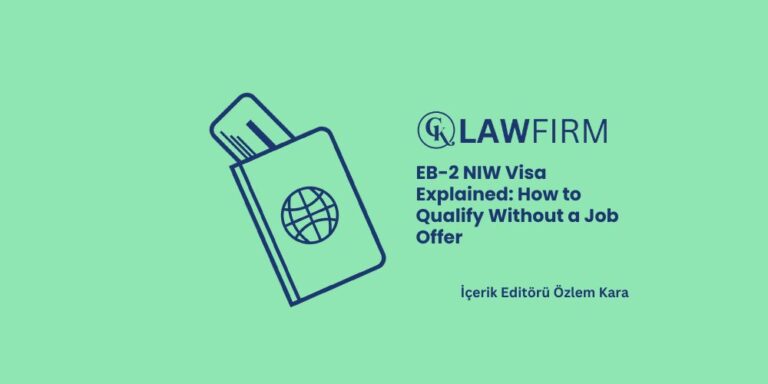Schedule an Appointment with Our Attorneys Now

How to Extend or Change Your Non-Immigrant Status
Extend or change your non-immigrant status in the U.S. Our guide covers eligibility, application steps, and required documents.
By Asim Kilinc, Immigration Attorney at CK Law Firm
For many non-immigrants in the U.S., the need to extend or change their visa status arises due to various reasons, such as prolonged studies, new employment opportunities, or unexpected personal circumstances. Navigating the process of extending or changing your non-immigrant status can be complex and requires careful attention to detail. This guide provides detailed information on how to extend or change your visa status while in the U.S., ensuring compliance with immigration laws and regulations.
Understanding Non-Immigrant Status
Non-immigrant visas are temporary visas granted for specific purposes, such as tourism, business, study, or work. Common non-immigrant visa categories include:
- B-1/B-2: Business and tourist visas
- F-1: Student visas
- H-1B: Specialty occupation worker visas
- J-1: Exchange visitor visas
- L-1: Intra-company transferee visas
Reasons to Extend or Change Your Status
1. Extend Your Stay
- You may need to stay longer than initially planned due to extended studies, continued employment, or personal reasons.
2. Change Your Purpose of Stay
- Your initial reason for visiting the U.S. might change, such as transitioning from a student to a worker or switching from a tourist visa to a student visa.
Step-by-Step Guide to Extending or Changing Your Status
Step 1: Determine Eligibility
Eligibility for Extension
- You must be lawfully admitted into the U.S. with a non-immigrant visa.
- Your visa status must still be valid.
- You have not committed any crimes that make you ineligible.
- You have not violated the conditions of your admission.
Eligibility for Change of Status
- You must meet the eligibility criteria for the new visa category you are applying for.
- You must be lawfully present in the U.S. at the time of application.
- You must not have engaged in unauthorized employment.
Step 2: File the Appropriate Form
For Extension of Stay
- Form I-539: Application to Extend/Change Non-immigrant Status.
- Supporting Documents: Include a copy of your I-94 Arrival/Departure Record, evidence of financial support, and a letter explaining the reason for the extension.
Example: Jane, an F-1 student, needed to extend her stay to complete her degree. We filed Form I-539 with her I-94, proof of continued enrollment, and financial support documents.
For Change of Status
- Form I-539: Used for most status changes.
- Form I-129: Petition for a Non-immigrant Worker, used if you are changing to a work visa like H-1B.
- Supporting Documents: Varies based on the new status, including proof of eligibility for the new status, current I-94, and a letter explaining the change.
Example: Ahmed, on a B-2 tourist visa, decided to pursue a degree. We filed Form I-539, including his I-94, acceptance letter from the university, and proof of financial support.
Step 3: Gather Supporting Documents
Ensure you have all necessary documents to support your application:
- Proof of Financial Support: Bank statements, affidavits of support.
- Proof of Continuous Residence: Lease agreements, utility bills.
- Evidence of Ties to Home Country: To demonstrate intent to return after the temporary stay.
- Employer’s Letter: If changing to a work visa, include a job offer letter and employment verification.
Step 4: Submit Your Application
- Filing: Submit your completed form and supporting documents to USCIS before your current status expires.
- Fee: Pay the required filing fee. Check the USCIS website for the most current fee information.
Example: Sarah, transitioning from an F-1 student visa to an H-1B work visa, needed to file Form I-129. We included her I-94, job offer letter, and proof of her degree completion.
Step 5: Attend Biometrics Appointment (if required)
- Notice: You may receive a notice for a biometrics appointment.
- Appointment: Attend the appointment to have your fingerprints, photo, and signature taken.
Step 6: Wait for USCIS Decision
- Processing Time: USCIS will review your application, which can take several months.
- Stay Informed: Check the status of your application online using the USCIS Case Status tool.
Example: David, an L-1 visa holder, applied to extend his stay. We monitored the case status online and kept him informed throughout the process.
Special Considerations
1. Travel Restrictions
- Avoid international travel while your application is pending, as leaving the U.S. can be considered an abandonment of your application.
2. Overstay Consequences
- Staying beyond your authorized period without filing for an extension or change can result in being out of status, which can affect future immigration benefits.
3. Premium Processing
- For certain visa categories, premium processing is available for an additional fee, expediting the decision-making process.
Conclusion
Extending or changing your non-immigrant status in the U.S. requires careful planning and attention to detail. By following the steps outlined in this guide and seeking the assistance of an experienced immigration attorney, you can navigate the process smoothly and increase your chances of a successful outcome. At CK Law Firm, we are dedicated to providing expert legal support tailored to your unique situation. Contact us today to discuss your immigration needs and explore how we can help you achieve your goals.





